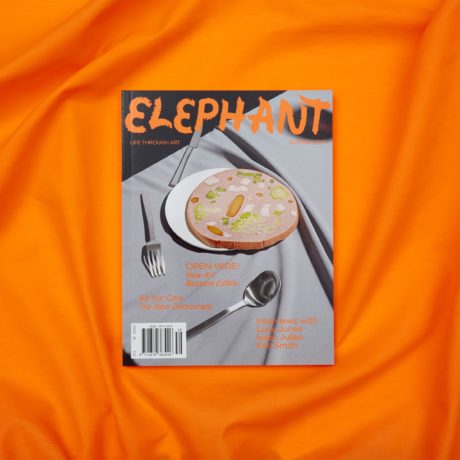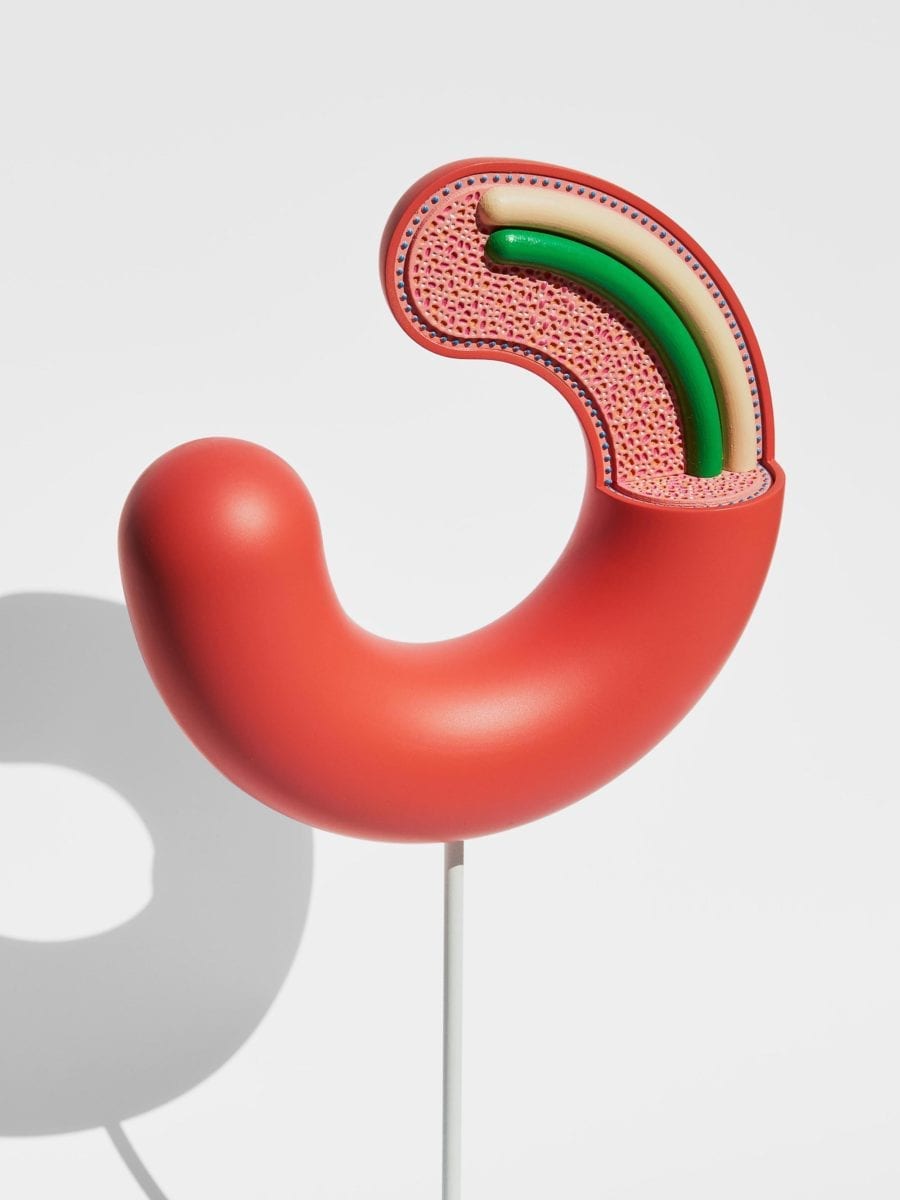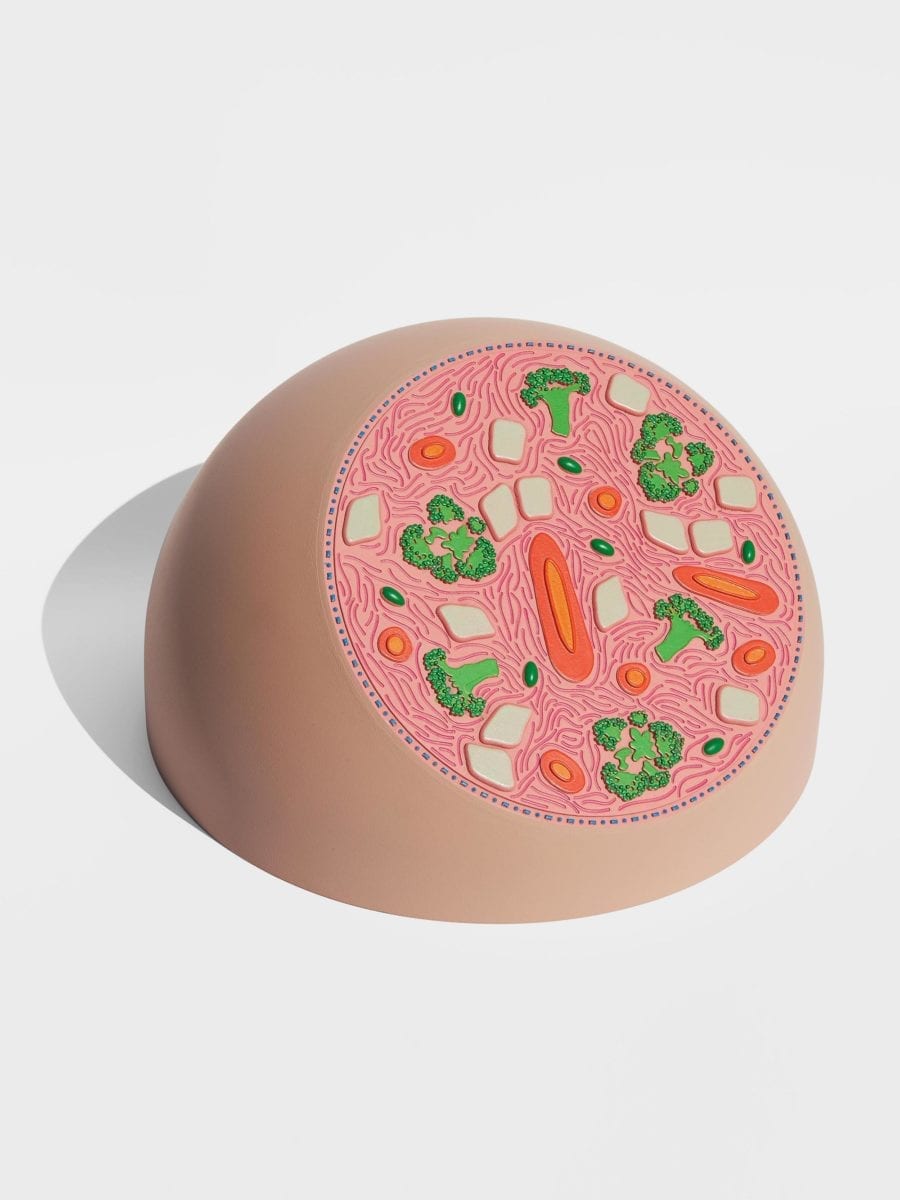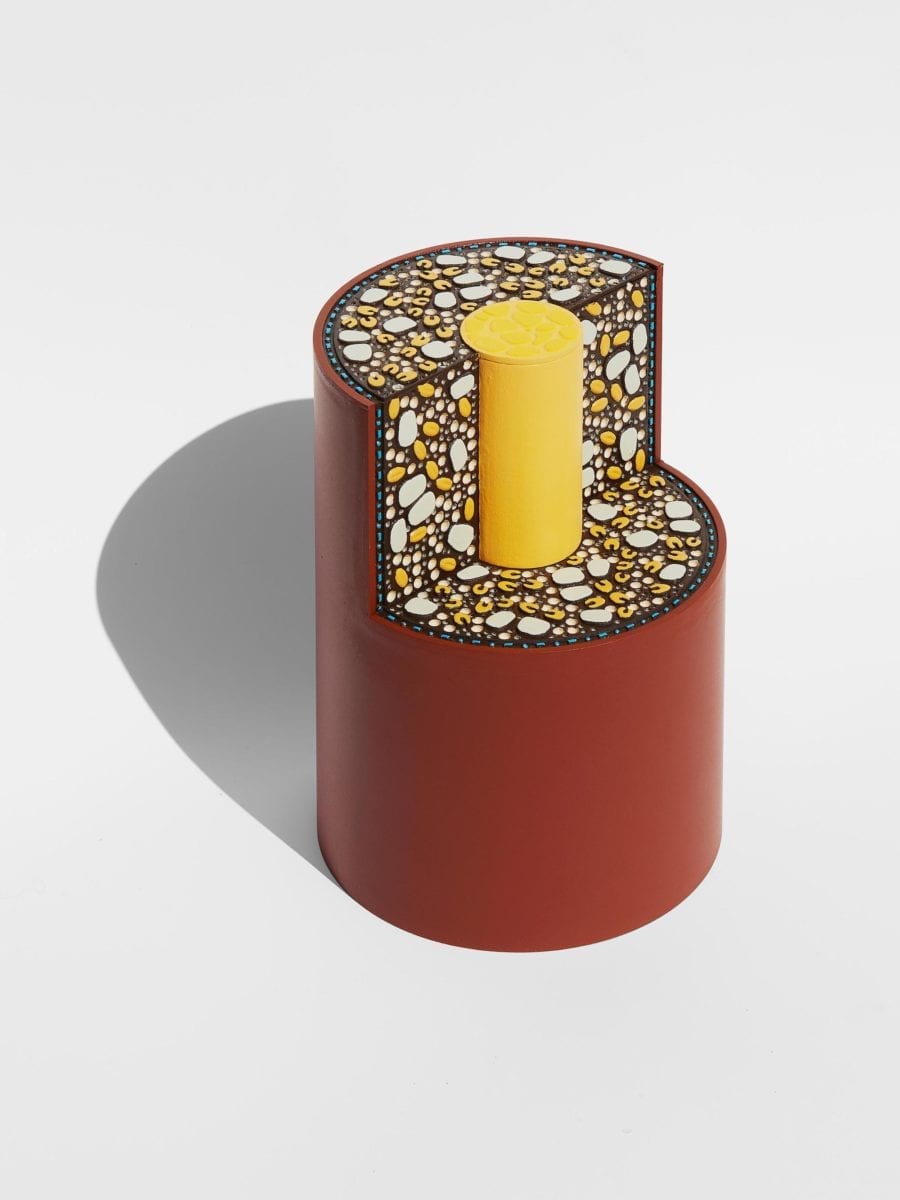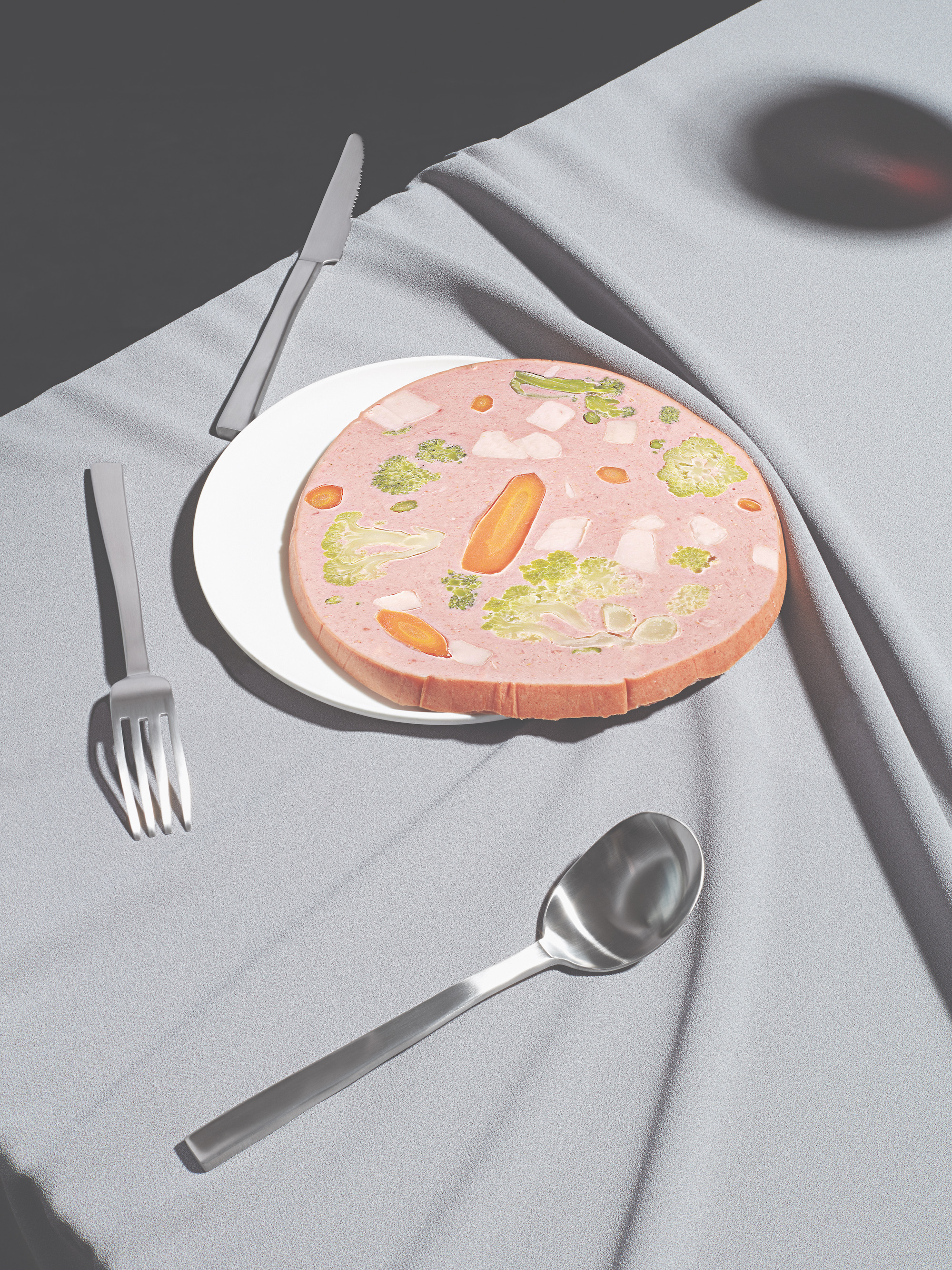
You are what you eat, or so the saying goes, but just how well do you really know what goes into the food that you consume? From artificial sweeteners to unknown preservatives, there’s always more than meets the eye when it comes to modern meals. Perhaps no product exemplifies this better than the humble sausage, extruded from a mix of processed meat, fat and herbs.
Carolien Niebling’s Sausage of the Future takes the all-too familiar foodstuff and radically reinvents the format. A designer and researcher based in Zurich, she completed her studies in Product Design at ECAL in 2014 and continues to work at the university. In her research-led exploration, Niebling proposes a rainbow variety of different fillings for a variety of sausages, from sweet apple and chocolate saucisson to a multicoloured mortadella studded with broccoli, romanesco, cauliflower and carrot.
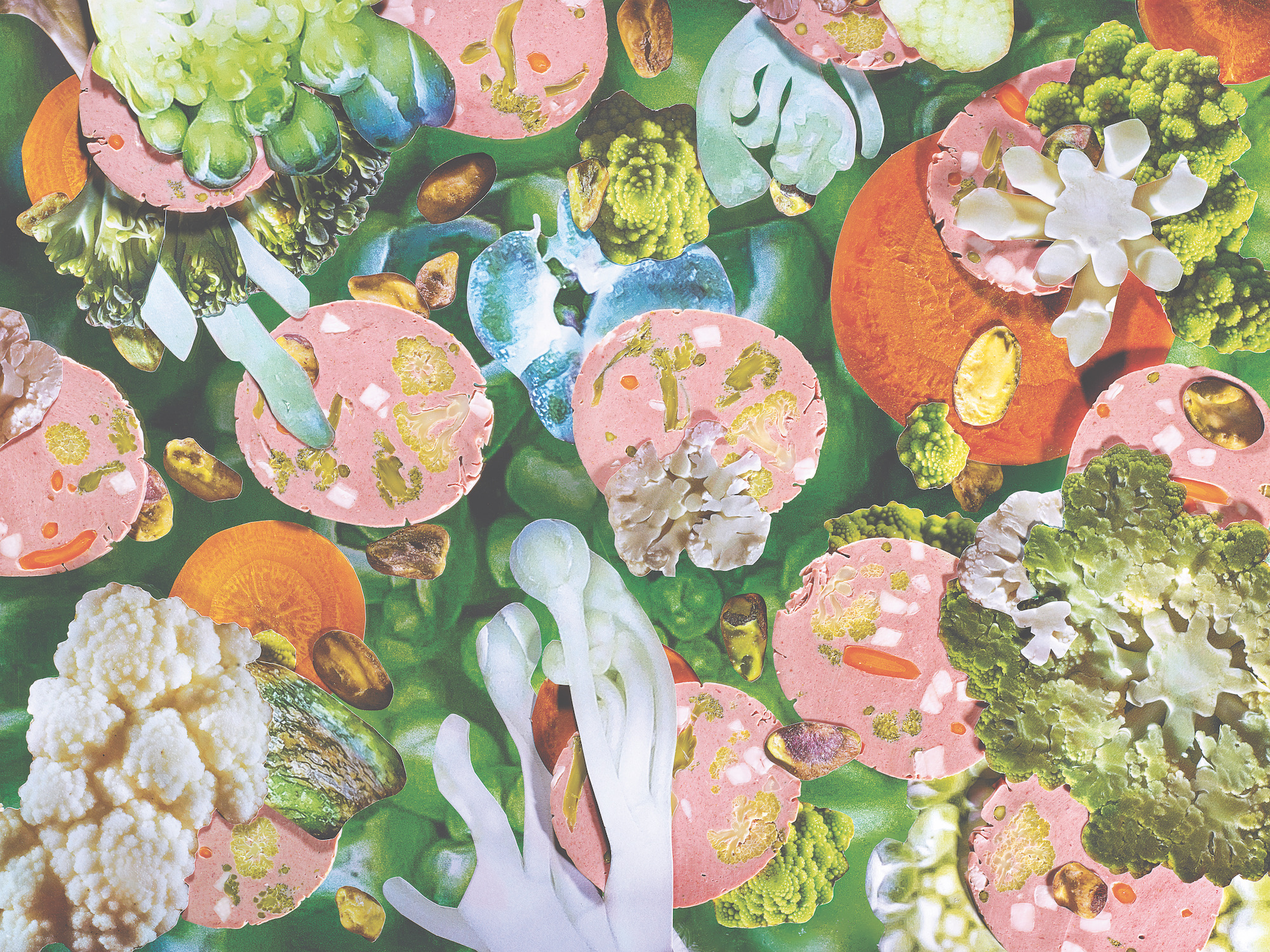
“From artificial sweeteners to unknown preservatives, there’s always more than meets the eye when it comes to modern meals”
Her approach is experimental and speculative, working with designers and artists to imagine alternatives that don’t just shy away from the meat industry, but take on one of its most recognisable and comforting formats, the sausage, and turn it on its head. “The fact that we need to eat less meat does not mean that we have to get rid of the existing meat processing industry. We just need to tweak and adapt it. I want to inspire people to think differently about what and how they eat,” she told It’s Nice That last year.
Her bright and playful images reveal cross-sections of an array of sausages, developed from recipes devised over a three-year period with a butcher. Imagination and reality collide in her colourful visuals, which mix rigorous research with dreamlike speculation. Across a kaleidoscope of edible goods, she puts forward future possibilities for human consumption, treading the line between lip-smacking visual allure and unconventional fillings. It all looks good enough to eat, but you might be in for a few surprise ingredients along the way.
